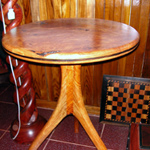
Arts, Painting, Endangered/ Red List, Natural Dyes, Pigments, Colours, Ritual Arts/Crafts
Ajanta Paintings of Maharashtra
The Ajanta Caves are a group of 30 rock-cut Buddhist cave monuments in Maharashtra’s Aurangabad district that date from the 2nd century BCE to about 480 CE. The paintings in the Ajanta caves primarily depict the Jataka tales. These are Buddhist stories narrating Buddha’s past births to impart ancient morals and traditional lore.
Mural paintings have been discovered from both the earlier and later periods. Several mural fragments preserved from earlier caves indicate that Indian painters had perfected a simple and fluent naturalistic style by the Stavhana dynasty, if not earlier. Many similarities with Greco-Buddhism can also be seen, as well as evidence of a shared artistic idiom.
The paintings are in “dry fresco,” which means that they were painted on top of a dry plaster base rather than onto wet plaster. During the Gupta period, painting was widely practised and valued. Unlike much Indian mural art, the paintings are not set out in horizontal bands like a frieze, but rather depict vast scenes extending out from a single person or community in the middle. The ceilings are often decorated with sophisticated and elaborate floral motifs, many of which are inspired by sculpture.
Gallery
YOUR VIEWS
PRACTITIONERS: INDIA
Access 70,000+ practitioners in 2500+ crafts across India.
BIBLIOGRAPHY
10,000+ listings on arts, crafts, design, heritage, culture etc.
GLOSSARY
Rich and often unfamiliar vocabulary of crafts and textiles.
SHOP at India InCH
Needs to be written.





